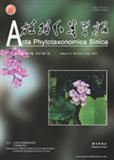XIAO Pei-Gen, JIANG Yan, LI Ping, LUO Yi-Bo, LIU Yong
Beimu, one of the most commonly used Chinese Materia Medica (CMM), is
derived from the bulbs of some fritillaries. In recent years, a large number of new species and
infraspecific taxa of the genus Fritillaria have been described from China, with total number
of taxa of 80 species, 52 varieties, and 6 forms. The dramatic increase of new taxa of the
Chinese fritillaries has influenced the investigation, application, quality control and
commodities circulation of the CMM “Beimu”. We undertook a comprehensive study of the
morphological, geographical, phytochemical and historical aspects of Chinese medicinal
fritillaries, as well as their current application. We treated the source plants of “Beimu” from a
pharmacophylogenetic point of view as the following six groups. (l) Zhebeimu (浙贝母) is a
general name of bulbs mainly derived from the cultivated Fritillaria thunbergii in Zhejiang
and Jiangsu provinces. It contains D/E trans cevanine group alkaloids, predominantly
verticine, isoverticine, and verticinone. No D/E cis cevanine group alkaloids were detected.
(2) Yibeimu (伊贝母) consists of F. walujewii and F. pallidiflora, which are distributed in
Xingjiang Uygur Autonomous Region. Unlike Zhebeimu, Yibeimu contains D/E cis cevanine
group alkaloids, of which imperaline is representative; no D/E trans form of cevanine group
alkaloids has so far been found. (3) Pingbeimu (平贝母) is obtained from cultivated F.
ussuriensis in northeastern China. It contains both D/E trans and cis forms of cevanine group
alkaloids. (4) Chuanbeimu (川贝母) is the most important medicinally used Beimu; it is
derived mainly from F. cirrhosa, F. przewalskii, and F. unibracteata in the Hengduan
mountains and their adjacent regions. These three species all have smaller bulbs than the other
species and are the main source of “Qingbei” (青贝), a kind of Beimu of the highest quality.
Fritillaria cirrhosa, distributed in Xizang, Yunnan, Sichuan, and Qinghai, shows many
morphological variations, and towards its northwestern limit is replaced by a very closely
related species, F. taipaiensis. In addition, the bulbs of F. delavayi, called Lubei (炉贝), are
also in the group of Chuanbeimu. All kinds of Chuanbeimu contain both D/E trans and D/E
cis cevanine group alkaloids. (5) Hubei Beimu (湖北贝母) is obtained mainly from bulbs of
cultivated F. hupehensis, which is very closely related to F. monantha. It contains both D/E
trans and cis forms of cevanine group alkaloids; verticine and isoverticine are representative
of the D/E trans form, and hupehenine, hupeheninoside, hupehenrine, and hupehenizine are
representative of the D/E cis form. (6) Anhui Beimu (安徽贝母) is derived from F. anhuiensis
and contains only D/E trans cevanine group alkaloids. The six groups of fritillaries have six
“Dao-di” (genuine) localities of origin. This is in accordance with current application and
marketing. All except Anhui Beimu are recorded in the latest edition of Pharmacopoeia of the
People’s Republic of China (2005 ed., Vol. 1). As a result of this study, we advocate that the
publication and naming of new taxa of the most important economic plants should be more
prudent.

